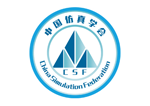Journal of System Simulation
Abstract
Abstract: In the traditonal flapping-wing aircraft model, most of the wings are two-dimensional rigid wings, and the upswing and downwing processes are completely symmetrical. In order to further improve the aerodynamic characteristics of the flapping-wing aircraft, this paper uses the idea of approximate flexibility to establish the multi-stage wing to achieve the approximate flexibility effect. At the same time, the rapid return characteristic is added to prolong the down-flapping time. And a three-dimensional model of “flutter-twist-bend folding” is proposed by adding the bending-folding motion on the basis of the original movement and twisting motion. The model is imported into Xflow to change the motion parameters of the flapping-wing aircraft model, and the aerodynamic simulation of the flapping-wing aircraft model is carried out. Therefore, the non-linear relationship between the lift coefficient and the trust coefficient of the multi-stage wing and the MDOF (multiple degree of freedom) of the flapping-wing aircraft and the flow velocity, the flapping frequency, the wing initial angle of attack and the inner wing flutter amplitude is obtained.
Recommended Citation
Yang, Yonggang and Gu, Xindong
(2019)
"Simulation Study on Aerodynamic Characteristics of Flapping-wing Aircraft with Multi-stage Wing and Multiple Degree of Freedom,"
Journal of System Simulation: Vol. 31:
Iss.
9, Article 11.
DOI: 10.16182/j.issn1004731x.joss.17-0324
Available at:
https://dc-china-simulation.researchcommons.org/journal/vol31/iss9/11
First Page
1827
Revised Date
2017-10-23
DOI Link
https://doi.org/10.16182/j.issn1004731x.joss.17-0324
Last Page
1834
CLC
V224
Recommended Citation
Yang Yonggang, Gu Xindong. Simulation Study on Aerodynamic Characteristics of Flapping-wing Aircraft with Multi-stage Wing and Multiple Degree of Freedom[J]. Journal of System Simulation, 2019, 31(9): 1827-1834.
DOI
10.16182/j.issn1004731x.joss.17-0324
Included in
Artificial Intelligence and Robotics Commons, Computer Engineering Commons, Numerical Analysis and Scientific Computing Commons, Operations Research, Systems Engineering and Industrial Engineering Commons, Systems Science Commons

